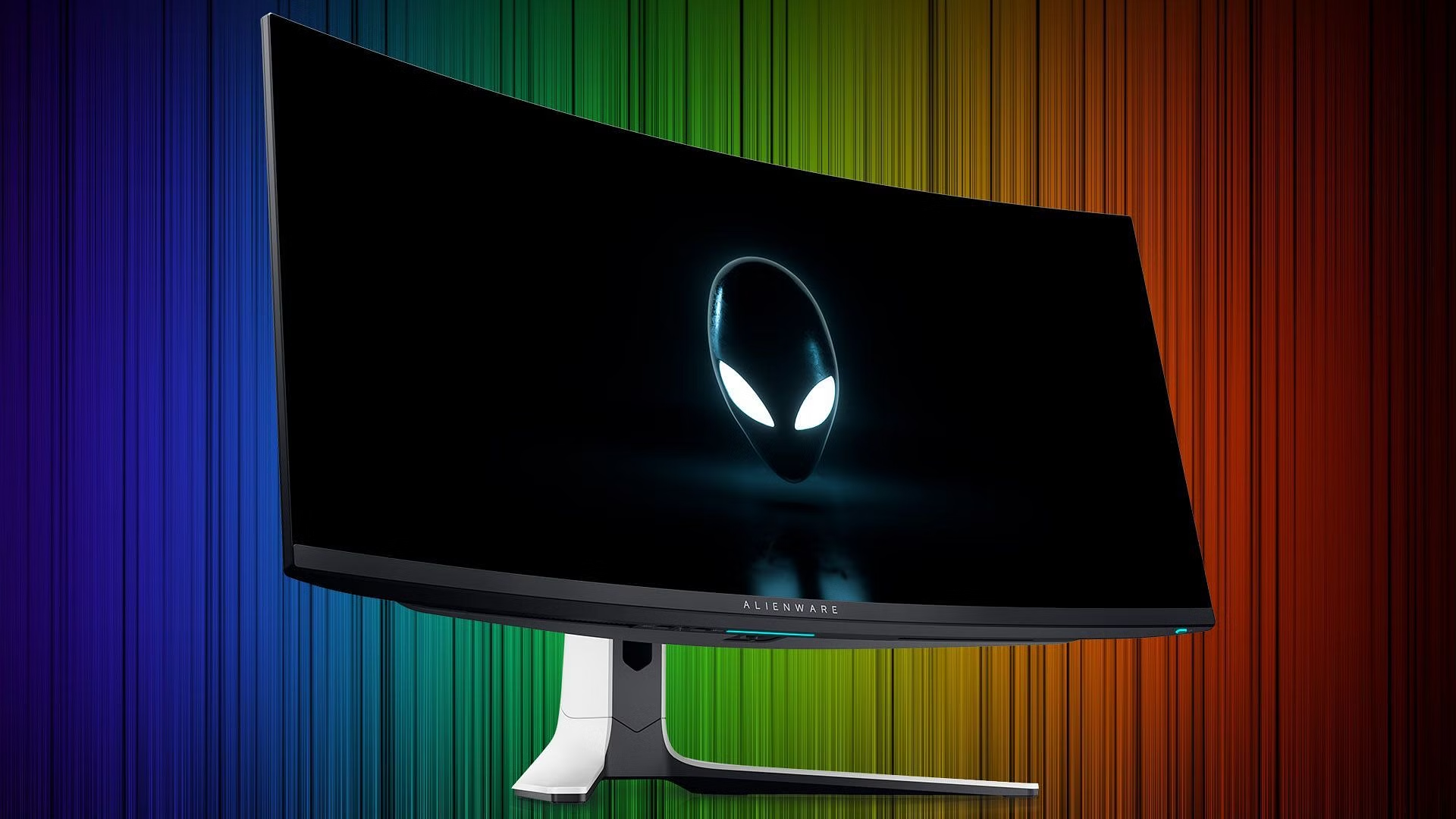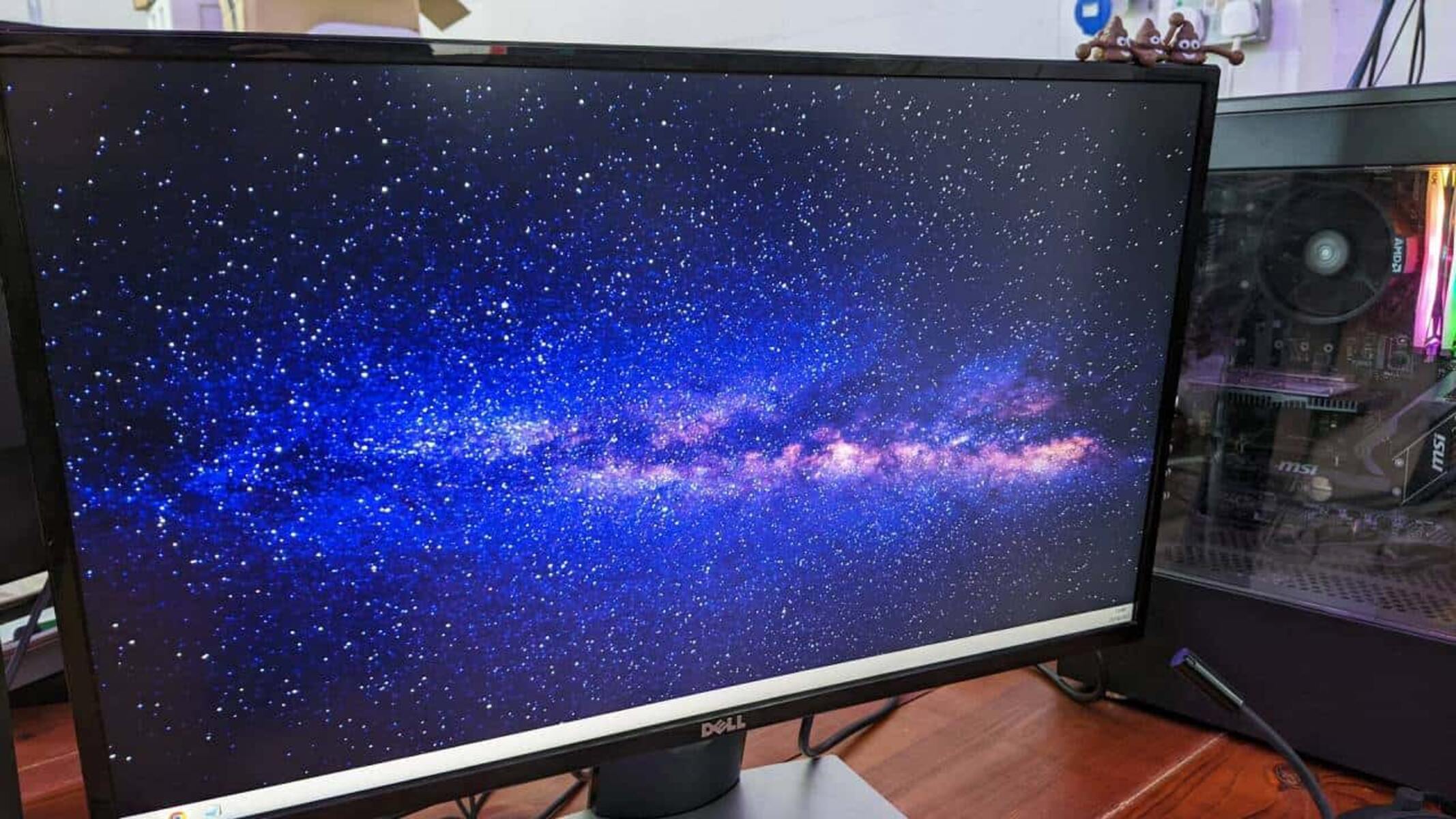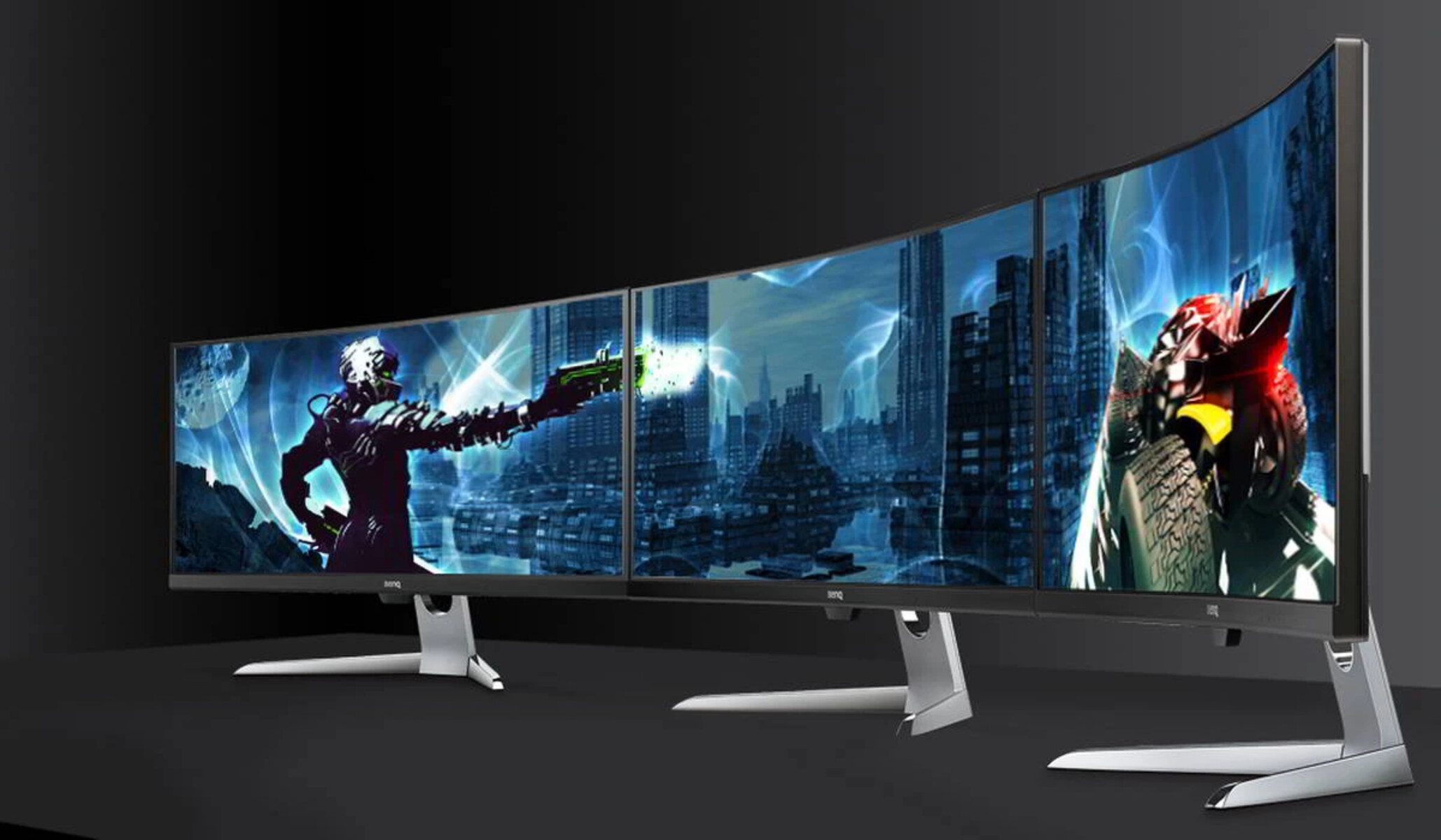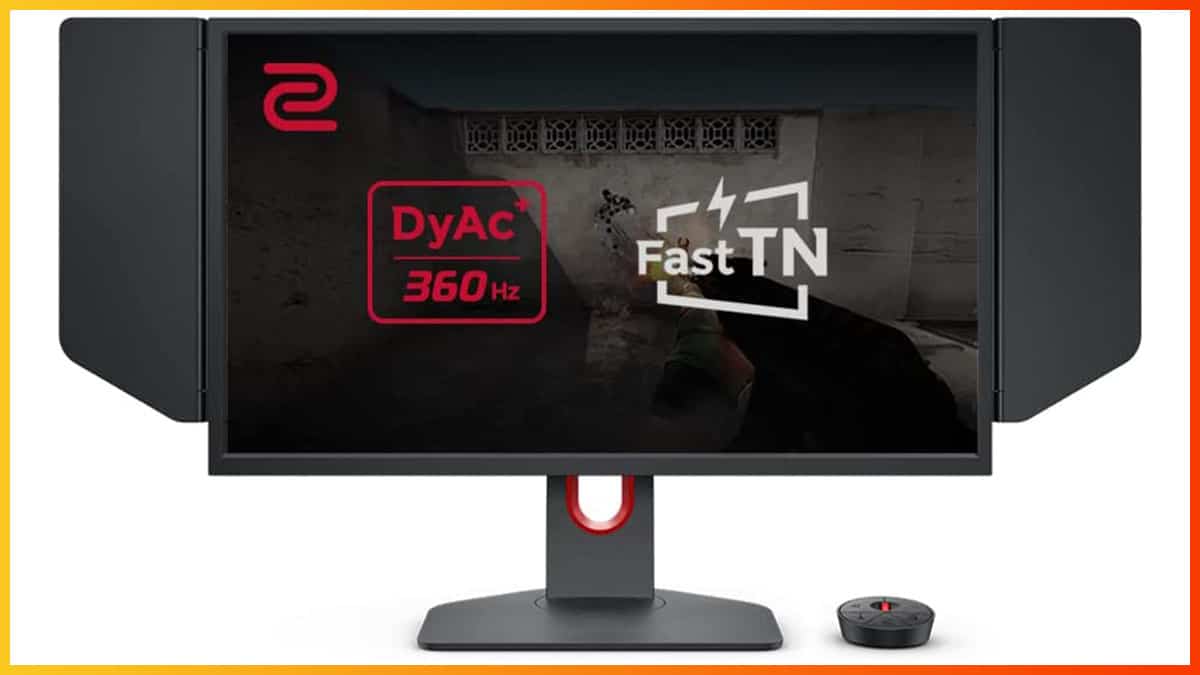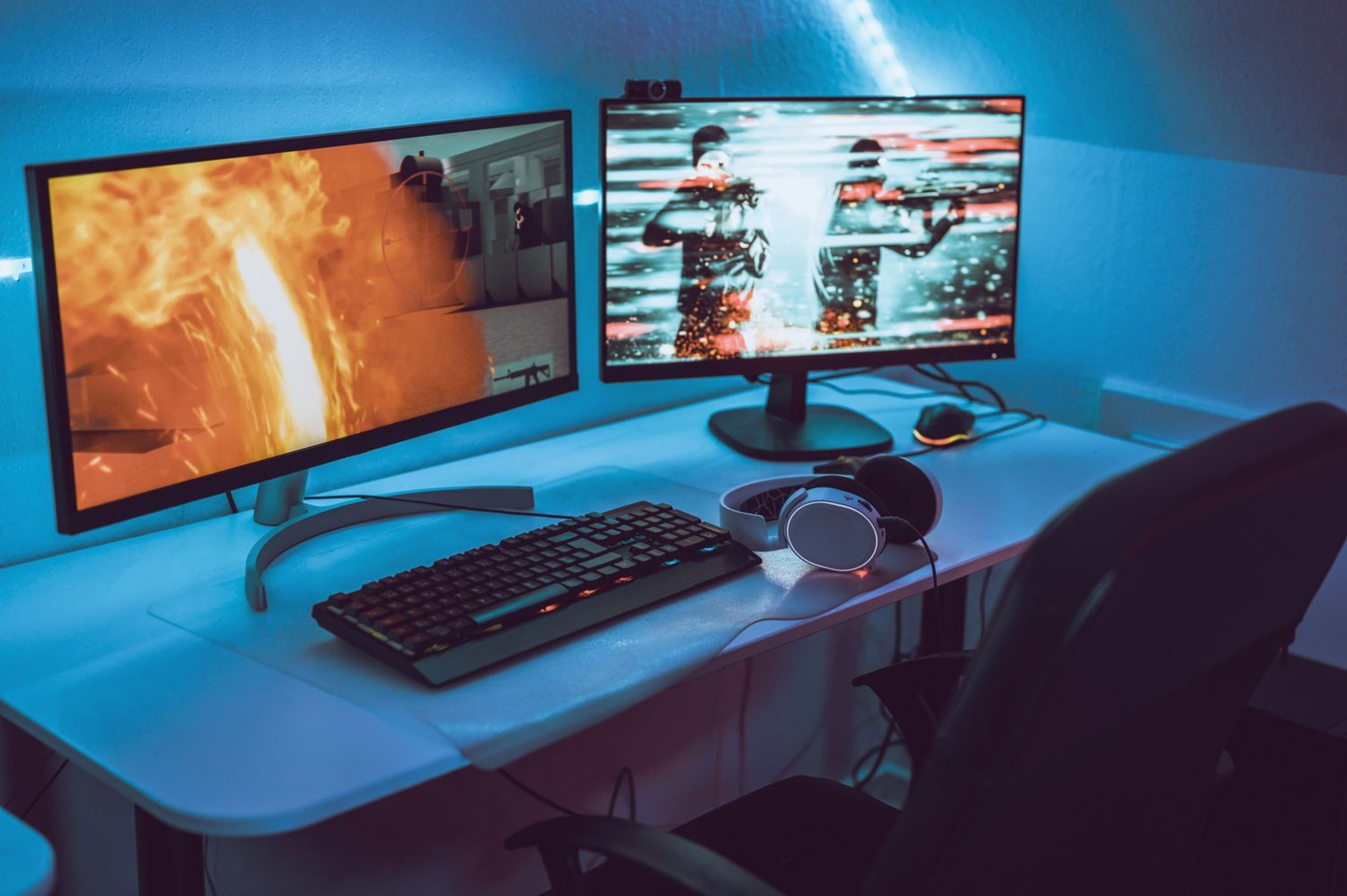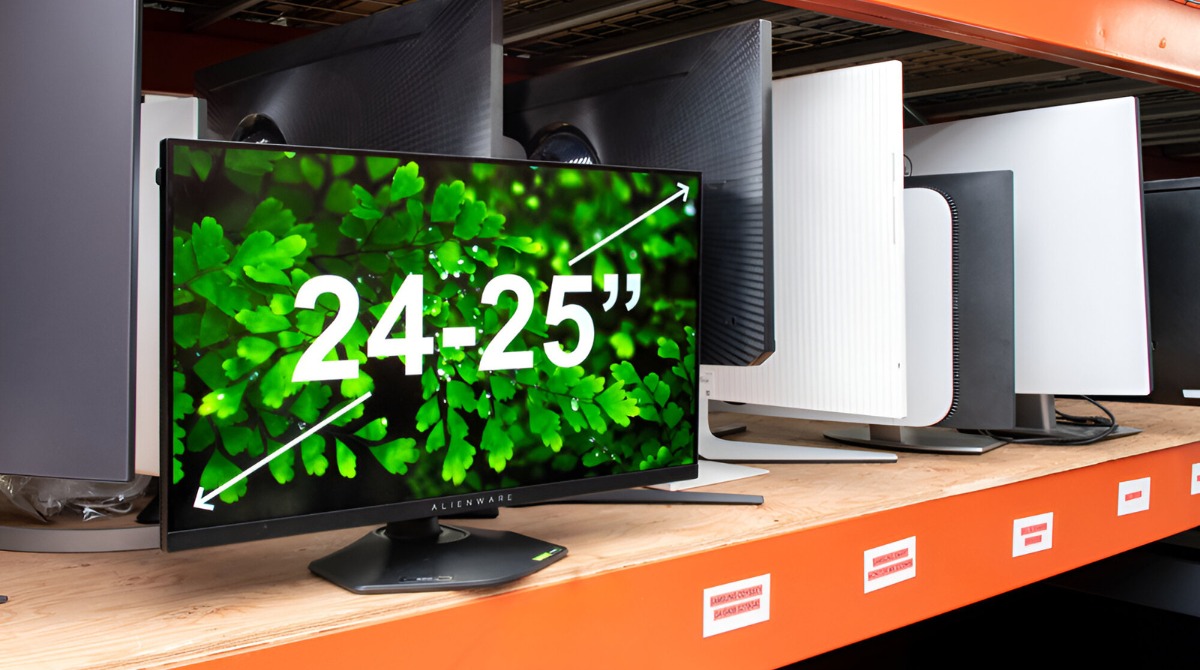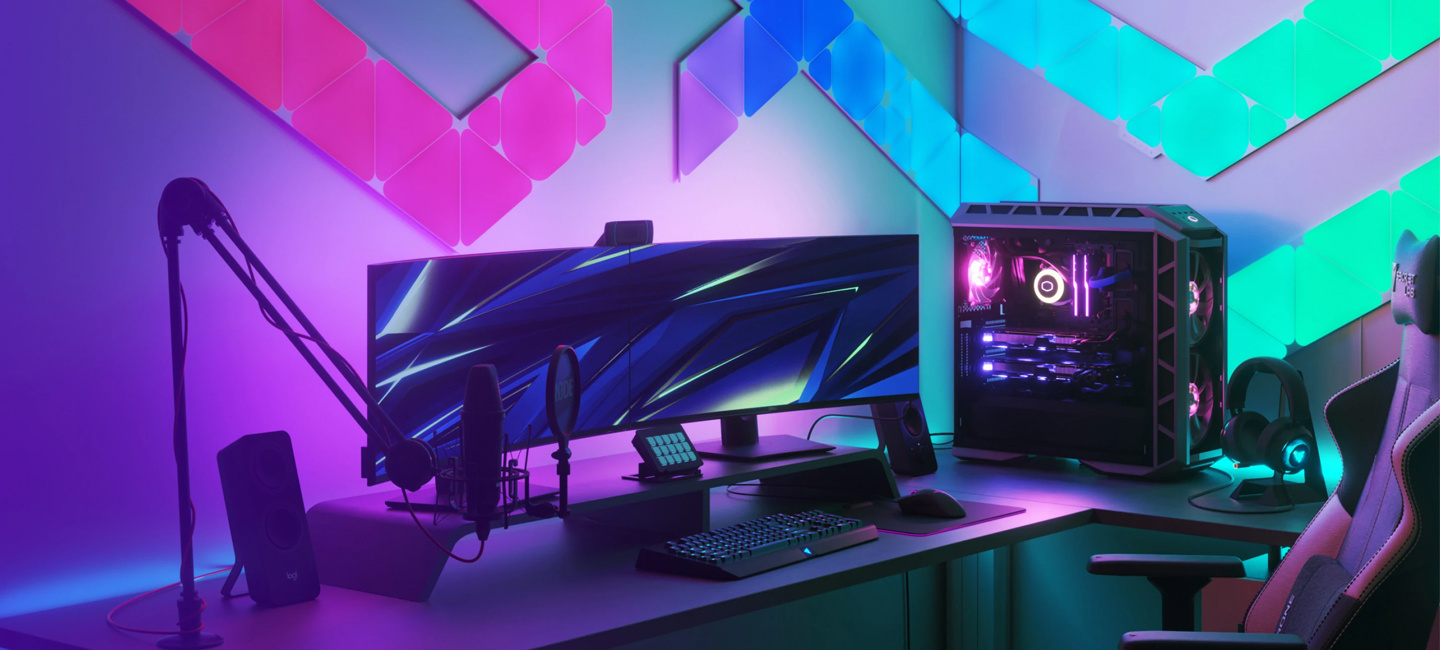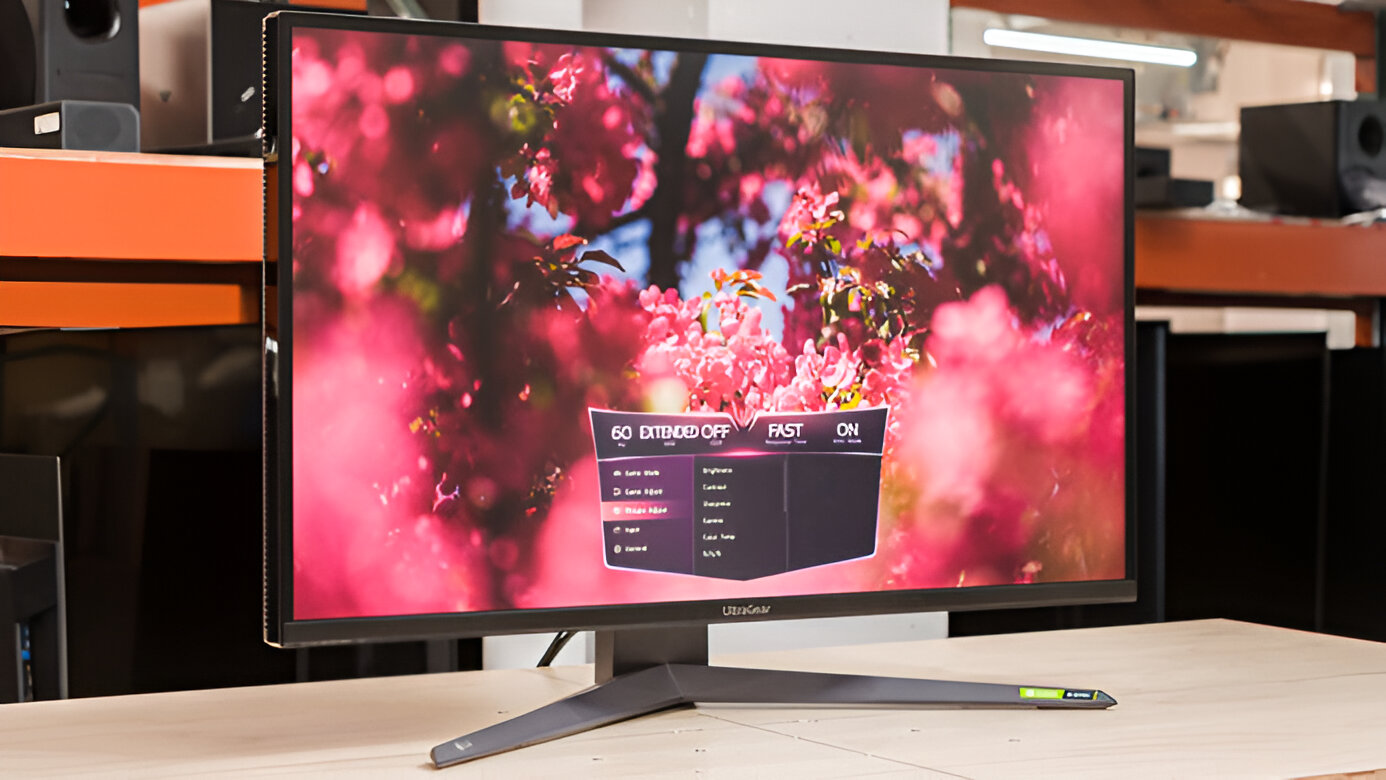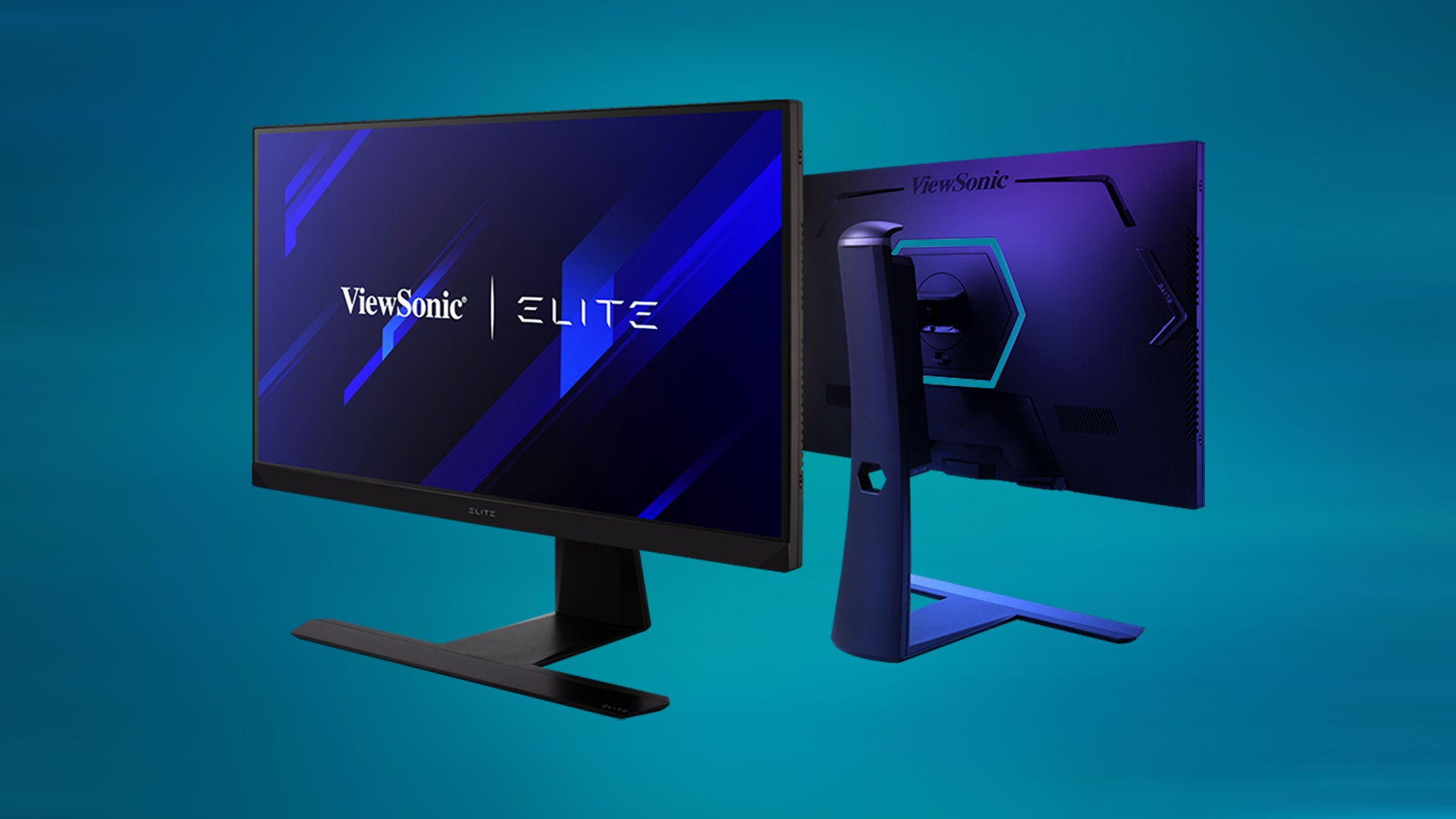Introduction
Welcome to the world of gaming, where every frame matters and split-second reactions can determine victory or defeat. When it comes to gaming, having the right equipment can make all the difference. While choosing a gaming monitor, one important factor to consider is the refresh rate.
The refresh rate of a monitor refers to how many times the screen updates with new images per second. It is measured in Hertz (Hz). A higher refresh rate means a smoother and more fluid visual experience, especially during fast-paced and action-packed games.
But what is the best refresh rate for a gaming monitor? Is higher always better? In this article, we will delve into the world of refresh rates and help you understand how they affect gaming performance. Whether you are a casual gamer or an aspiring esports professional, this guide will assist you in making an informed decision.
Before we dive into the specifics, let’s take a closer look at how refresh rate impacts gaming, and why it’s worth considering when purchasing a gaming monitor.
What Is Refresh Rate?
The refresh rate of a gaming monitor refers to the number of times the screen updates with new images per second. It is measured in Hertz (Hz). A higher refresh rate means that the monitor can display more frames per second, resulting in a smoother and more visually appealing experience.
When a monitor has a low refresh rate, the images on the screen may appear choppy or blurry, especially during fast-paced action sequences. This can make it challenging to track movements or react quickly, which is crucial for gaming.
On the other hand, a high refresh rate reduces motion blur and provides more fluid and responsive gameplay. Each frame is displayed for a shorter duration, allowing for quicker updates and smoother transitions between images. This is why many gamers opt for monitors with higher refresh rates to gain a competitive edge.
It’s important to note that the refresh rate of a monitor is closely tied to the frames per second (FPS) rendered by your graphics card. The FPS is the number of frames that your GPU can generate in a second. To fully benefit from a high refresh rate monitor, your system needs to be able to produce a consistent and high FPS.
In summary, the refresh rate of a gaming monitor determines how many times the screen updates with new frames per second. A higher refresh rate provides a smoother and more visually pleasing experience, while a lower refresh rate may result in choppiness and motion blur. Understanding the importance of refresh rate is crucial when choosing a gaming monitor to enhance your overall gaming performance.
How Does Refresh Rate Affect Gaming?
The refresh rate of a gaming monitor has a significant impact on the overall gaming experience. Let’s explore how it affects various aspects of gaming performance:
- Smoother Gameplay: A higher refresh rate results in smoother gameplay by reducing motion blur and screen tearing. With a higher number of frames displayed per second, movements appear more fluid and lifelike, allowing for better immersion in the game.
- Improved Responsiveness: A higher refresh rate provides quicker updates between frames, reducing the input lag. This means that actions performed by the player, such as mouse movements or keystrokes, have a more immediate effect on the screen. In fast-paced games that require rapid reactions, a higher refresh rate can give players a competitive advantage.
- Enhanced Visibility: With a higher refresh rate, objects in the game are displayed more clearly, especially during fast movements. This allows gamers to track the movements of opponents with greater accuracy, making it easier to aim and strategize, particularly in first-person shooters.
- Reduced Eye Strain: A higher refresh rate can help reduce eye strain during long gaming sessions. When the monitor refreshes more frequently, there is less flickering, which can contribute to eye fatigue. This is especially important for professional gamers who spend extended periods in front of the screen.
- Compatibility with Adaptive Sync Technologies: Higher refresh rate monitors often come equipped with adaptive sync technologies like FreeSync (for AMD graphics cards) or G-Sync (for NVIDIA graphics cards). These technologies synchronize the refresh rate of the monitor with the graphics card’s output, reducing screen tearing and stuttering for a smoother and more enjoyable gaming experience.
It’s important to note that while a higher refresh rate offers these benefits, it is not the only factor that influences gaming performance. The power of your graphics card, the resolution of the monitor, and other hardware specifications can also impact the overall gaming experience.
Understanding how refresh rate affects gaming allows you to make an informed decision when selecting a gaming monitor. By considering the gameplay requirements of your favorite games and your system’s capabilities, you can choose the optimal refresh rate to enhance your gaming performance and enjoyment.
Common Refresh Rates
Gaming monitors are available in a range of refresh rates, each offering a different level of visual performance. Let’s explore the most common refresh rates found in gaming monitors:
- 60Hz: The 60Hz refresh rate is considered the standard for most monitors. It means that the screen refreshes 60 times per second, displaying 60 unique frames. While it provides a smooth enough experience for casual gamers and general use, it may not be ideal for competitive gaming that requires fast reaction times.
- 144Hz: The 144Hz refresh rate has become the sweet spot for many gamers. With a faster screen refresh rate of 144 times per second, it provides a significant improvement in visual smoothness and responsiveness compared to 60Hz. It allows for faster-paced gameplay, smoother motion, and reduced motion blur.
- 240Hz: For hardcore gamers and esports professionals, the 240Hz refresh rate offers the pinnacle of visual performance. With an even higher refresh rate of 240 times per second, it delivers unparalleled smoothness and responsiveness. Games feel incredibly fluid, and every motion appears sharp and precise. However, the difference between 144Hz and 240Hz may not be as noticeable to casual gamers.
It’s worth noting that higher refresh rates often require more powerful hardware to consistently achieve high frames per second (FPS). A graphics processing unit (GPU) capable of generating a higher FPS will fully take advantage of the increased refresh rate. Additionally, the monitor’s resolution and adaptive sync technologies, such as FreeSync or G-Sync, can impact the overall gaming experience.
Overall, the refresh rate you choose for your gaming monitor should depend on your preferences, the types of games you play, and your budget. While higher refresh rates provide a smoother and more responsive experience, they may come at a higher price tag. It’s important to strike a balance between your desired visual performance and your system’s capabilities.
Now that you have a better understanding of the common refresh rates available in gaming monitors, you can make an informed decision when selecting the best refresh rate that suits your gaming needs.
60Hz: The Standard Refresh Rate
The 60Hz refresh rate has long been considered the standard for most gaming monitors, as well as for general-purpose displays. With a refresh rate of 60 times per second, it means that the monitor can display 60 unique frames in one second. While it may not offer the same level of smoothness and responsiveness as higher refresh rates, it provides a satisfactory gaming experience for casual gamers and everyday use.
One of the advantages of the 60Hz refresh rate is its widespread compatibility. Most games and graphics cards are optimized for this refresh rate, ensuring smooth gameplay without any compatibility issues. It is also relatively easy for your system to maintain a stable 60 frames per second (FPS), making it suitable for less demanding games or hardware configurations.
However, the limitation of the 60Hz refresh rate becomes evident during fast-paced gaming sequences. It may struggle to keep up with rapid movements, resulting in motion blur and input lag. Gamers who play competitive titles that require quick reactions and precise aiming may find that a higher refresh rate offers a significant advantage.
Despite its limitations, the 60Hz refresh rate remains a viable option for those working within budget constraints or playing less demanding games. It can still provide an enjoyable gaming experience, especially for single-player experiences or games with slower-paced gameplay.
For casual and non-competitive gamers, the 60Hz refresh rate may offer a good balance between affordability and performance. Additionally, it requires less power consumption compared to higher refresh rate monitors, making it a more energy-efficient choice.
In summary, the 60Hz refresh rate serves as the standard for many gaming monitors. While it may not offer the same level of fluidity and responsiveness as higher refresh rates, it still provides a satisfactory gaming experience for casual gamers. Consider your gaming needs, budget, and hardware capabilities before deciding on the refresh rate that’s right for you.
144Hz: The Sweet Spot for Competitive Gaming
When it comes to competitive gaming, the 144Hz refresh rate has become the sweet spot for many gamers. With a refresh rate of 144 times per second, it offers a significant improvement in visual smoothness and responsiveness compared to the standard 60Hz refresh rate.
One of the key advantages of the 144Hz refresh rate is its ability to display more frames per second (FPS), resulting in smoother gameplay. The faster screen refresh rate reduces motion blur and makes fast-paced action sequences feel more fluid and lifelike. It allows for better tracking of moving objects, enhances the overall visual clarity, and provides a more immersive gaming experience.
Competitive gaming often requires quick reactions and precise aiming. With a higher refresh rate, the responsiveness of the monitor increases as each frame is displayed for a shorter duration. This reduces the input lag, making your actions in the game feel more immediate and giving you a competitive edge. Whether you’re playing first-person shooters, racing games, or esports titles, the 144Hz refresh rate can greatly enhance your gaming performance.
Furthermore, the 144Hz refresh rate is well-supported by modern graphics cards and gaming systems. It allows gamers to take full advantage of their hardware capabilities, as it provides a smooth and consistent viewing experience even during intense gameplay.
While the 144Hz refresh rate offers significant benefits, it’s worth considering your hardware’s capabilities and the demands of the games you play. Achieving a stable 144 FPS can be challenging on lower-end systems or in graphically demanding games. However, even if your system cannot consistently hit the full 144 FPS, you can still benefit from the reduced motion blur and improved responsiveness compared to a standard 60Hz monitor.
Overall, the 144Hz refresh rate strikes a balance between performance and affordability. It has become a popular choice among competitive gamers, providing a smoother gaming experience and improving reaction times. If you’re serious about competitive gaming or want a more immersive gaming experience, the 144Hz refresh rate is the sweet spot to consider.
240Hz: Pushing the Limits for Esports Professionals
For esports professionals and hardcore gamers seeking the utmost in visual performance, the 240Hz refresh rate pushes the limits of what is achievable. With a refresh rate of 240 times per second, it offers unparalleled smoothness and responsiveness, taking gaming to the next level.
The main advantage of the 240Hz refresh rate is the incredible fluidity it brings to gaming. Each frame is displayed for an incredibly brief time, resulting in minimal motion blur and making fast-paced movements appear sharp and precise. For professional gamers participating in competitive esports, this level of visual clarity and responsiveness is crucial for gaining a competitive edge.
In addition, the reduced input lag associated with a higher refresh rate can make a noticeable difference in gameplay. With quicker updates between frames, actions performed by the player, such as mouse movements or keystrokes, are translated on the screen almost instantly. This near-instantaneous feedback allows for split-second decision making and precise control, which are essential in high-level esports competitions.
It’s important to note that achieving a stable 240 frames per second (FPS) can be demanding on hardware. You will need a powerful gaming system along with a compatible graphics card capable of delivering such high FPS consistently. Additionally, the benefits of a 240Hz monitor may be less noticeable in slower-paced games that do not require lightning-fast reactions or quick movements.
The 240Hz refresh rate is particularly suited for professional gamers and esports enthusiasts who prioritize every advantage in their competitive gameplay. It is also worth considering for gamers in fast-paced genres like first-person shooters or racing games, where split-second decisions and precise movements are key to success.
However, it is important to weigh the cost and the actual performance benefits of a 240Hz monitor. While it offers unparalleled smoothness and responsiveness, it may come at a significantly higher price compared to lower refresh rate monitors. Additionally, the difference between a 144Hz and 240Hz refresh rate may not be as noticeable to casual or non-competitive gamers.
In summary, the 240Hz refresh rate is designed for esports professionals and hardcore gamers who strive for the highest level of performance. It delivers exceptional smoothness, responsiveness, and reduced input lag, but it comes at a higher cost and requires powerful hardware to fully realize its potential. Consider your gaming needs, preferences, and budget before investing in a 240Hz monitor.
Factors to Consider When Choosing a Refresh Rate
Choosing the right refresh rate for your gaming monitor involves considering several factors. While higher refresh rates offer smoother and more responsive gameplay, there are other considerations to keep in mind. Here are some factors to consider when deciding on a refresh rate:
- GPU and System Requirements: A higher refresh rate requires a more powerful graphics processing unit (GPU) capable of generating a high number of frames per second (FPS). Make sure your system meets the recommended requirements to fully utilize the benefits of a higher refresh rate.
- Display Resolution Considerations: The resolution of your monitor affects the hardware requirements to achieve a higher refresh rate. Higher resolutions, such as 1440p or 4K, can be more demanding on your GPU, potentially limiting the achievable FPS. Consider the balance between resolution and refresh rate that best suits your gaming experience.
- Importance of Adaptive Sync Technologies: Adaptive sync technologies, such as AMD’s FreeSync and NVIDIA’s G-Sync, synchronize the refresh rate of the monitor with the output of the graphics card. This reduces screen tearing and stuttering, ensuring a smoother gaming experience, especially during fluctuating FPS. Consider whether your monitor supports adaptive sync technologies and whether they align with your graphics card of choice.
- Gaming Genre: Different gaming genres have different requirements. First-person shooters and fast-paced action games benefit greatly from higher refresh rates, as they demand quick reactions and smooth movements. On the other hand, slower-paced games like strategy or puzzle games may not require the same level of refresh rate for an optimal gaming experience.
- Budget: Higher refresh rate monitors typically come at a higher price point. Consider your budget and how much you are willing to invest in a gaming monitor. Keep in mind that the benefits of a higher refresh rate may not be as noticeable to casual or non-competitive gamers.
It’s important to strike a balance between your desired visual performance, system capabilities, and budget. For casual gamers, a 60Hz or even 75Hz monitor may suffice for a smooth gaming experience. If you’re a competitive gamer or an esports professional, investing in a 144Hz or 240Hz monitor can provide a significant advantage.
Ultimately, the refresh rate you choose should match your needs and preferences. Consider the factors mentioned above to make an informed decision that enhances your gaming experience and aligns with your gaming style and hardware setup.
GPU and System Requirements
When considering the refresh rate for your gaming monitor, one crucial factor to keep in mind is the compatibility of your graphics processing unit (GPU) and system capabilities. The refresh rate you choose should align with the performance capabilities of your hardware to ensure a smooth and optimal gaming experience.
A higher refresh rate requires a more powerful GPU that can consistently generate a high number of frames per second (FPS). The GPU plays a crucial role in rendering and delivering the frames to the monitor, and if it cannot keep up with the refresh rate, you may experience frame drops, screen tearing, or even stuttering.
Before opting for a higher refresh rate, make sure your GPU meets the recommended requirements for that specific refresh rate. Check the manufacturer’s specifications and ensure your system has the necessary processing power to consistently achieve the desired number of FPS at that refresh rate.
Additionally, it’s important to consider the impact of the resolution on your GPU’s performance in relation to the refresh rate. Higher monitor resolutions, such as 1440p or 4K, can be more demanding on your GPU. This means that achieving a high FPS at a higher resolution may be more challenging, potentially limiting the achievable refresh rate. It’s crucial to find the right balance between resolution and refresh rate that suits your hardware capabilities.
One key consideration is whether your system supports adaptive sync technologies, such as AMD’s FreeSync or NVIDIA’s G-Sync. These technologies synchronize the refresh rate of the monitor with the output of the GPU. This helps to eliminate screen tearing and stuttering, resulting in a smoother and more visually pleasing experience. However, note that adaptive sync technologies have their own specific requirements and may be compatible with only certain GPUs or monitors.
When choosing a refresh rate, make sure to research and understand the system requirements and recommendations provided by the monitor and GPU manufacturers. This will help ensure that your hardware is capable of delivering the desired performance for the chosen refresh rate.
In summary, the refresh rate you choose should be compatible with your GPU and system capabilities. Consider the processing power of your GPU, the resolution you wish to play at, and whether your system supports adaptive sync technologies. By ensuring your hardware can consistently achieve the desired FPS for the chosen refresh rate, you can optimize your gaming experience and enjoy smooth and lag-free gameplay.
Display Resolution Considerations
When selecting a refresh rate for your gaming monitor, it’s crucial to consider the relationship between the display resolution and the performance capabilities of your system. The resolution of your monitor can have a direct impact on the achievable refresh rate and overall gaming experience.
Higher resolutions, such as 1440p (2K) or 4K (UHD), offer sharper and more detailed visuals. However, they also place heavier demands on your graphics processing unit (GPU) and may require more powerful hardware to achieve high frame rates per second (FPS) consistently.
If you are aiming for a higher refresh rate, such as 144Hz or 240Hz, you should ensure that your GPU is capable of rendering and delivering a sufficient number of frames for that resolution. Failing to meet the necessary FPS can result in a lower refresh rate or frame drops, diminishing the smoothness and fluidity of the gaming experience.
On the other hand, if you are aiming for a lower refresh rate, such as 60Hz or 75Hz, the demands on your GPU may be less intense. Lower resolutions, such as 1080p (Full HD), are more easily achievable for most modern GPUs. This allows for smoother gameplay and the possibility of achieving higher FPS with a lower-end GPU.
It’s important to strike a balance between the desired resolution and the refresh rate that your system can comfortably handle. Assessing the capabilities of your GPU and CPU, as well as their compatibility with the chosen resolution, is vital for an optimal gaming experience.
Consider the types of games you play and the level of detail you desire. If you primarily play graphically demanding titles or prefer the utmost visual fidelity, you may want to invest in a higher resolution monitor. However, keep in mind that this may come with trade-offs in terms of the achievable refresh rate and overall performance.
Ultimately, it’s about finding the right balance between resolution and refresh rate for your gaming needs and hardware capabilities. Take the time to research the requirements and recommendations from both the monitor and GPU manufacturers, ensuring that your system is capable of delivering the desired performance for your chosen resolution and refresh rate.
By understanding the relationship between display resolution and refresh rate, you can make an informed decision that maximizes the gaming experience and ensures smooth gameplay.
Importance of Adaptive Sync Technologies
When considering the refresh rate for your gaming monitor, it’s important to take into account the availability and importance of adaptive sync technologies. These technologies, such as AMD’s FreeSync and NVIDIA’s G-Sync, are designed to synchronize the refresh rate of the monitor with the output of the graphics card, resulting in a smoother and tear-free gaming experience.
One of the key benefits of adaptive sync technologies is their ability to eliminate screen tearing. Screen tearing occurs when the monitor’s refresh rate and GPU’s output are not in sync, causing horizontal lines or splits to appear on the screen. This can be distracting and negatively impact gameplay immersion.
By matching the refresh rate of the monitor to the number of frames per second (FPS) output by the GPU, adaptive sync technologies reduce or even eliminate screen tearing. The result is a more visually pleasing and seamless gaming experience, with smoother transitions between frames.
Adaptive sync technologies also address the issue of stuttering or inconsistent frame delivery. In games where the FPS fluctuates, stuttering can occur, making the gameplay feel jarring and less fluid. Adaptive sync technologies help to smooth out these fluctuations, reducing stuttering and creating a more consistent visual experience.
It’s important to note that adaptive sync technologies require both a compatible monitor and graphics card. FreeSync is supported by AMD graphics cards, while G-Sync is designed for NVIDIA graphics cards. Some monitors may support both technologies, offering a wider range of compatibility options.
When choosing a gaming monitor, consider whether the monitor supports adaptive sync technologies and whether they align with your graphics card of choice. While not essential for all gamers, these technologies can greatly enhance the gaming experience, particularly for those who are sensitive to screen tearing or value smoother visuals.
However, it’s worth noting that adaptive sync technologies may come at a premium. Monitors with these features tend to be more expensive compared to those without. Consider your budget and prioritize the benefits of adaptive sync technologies based on your gaming preferences and sensitivity to visual disturbances.
In summary, adaptive sync technologies like FreeSync and G-Sync play a significant role in enhancing the visual experience of gaming monitors. By synchronizing the refresh rate of the monitor with the output of the graphics card, they reduce screen tearing and stuttering, resulting in a smoother and more visually pleasing gaming experience. Consider the compatibility, benefits, and cost of adaptive sync technologies when selecting a gaming monitor to ensure maximum visual performance and gameplay immersion.
The Best Refresh Rate for Different Genres of Games
When it comes to choosing the best refresh rate for your gaming monitor, it’s important to consider the specific genre of games you enjoy playing. Different genres have varying requirements and gameplay characteristics that can influence the optimal refresh rate for the best gaming experience. Let’s explore the recommended refresh rates for different game genres:
- First-Person Shooters (FPS): FPS games rely heavily on quick reactions, precise aiming, and smooth character movements. A higher refresh rate, such as 144Hz or 240Hz, is generally recommended for FPS games to eliminate motion blur, minimize input lag, and provide smoother gameplay. The enhanced fluidity allows players to track fast-moving targets more easily and react promptly to changes in the game environment.
- Racing Games: Racing games often feature fast-paced action and require quick reflexes for accurate steering and precise control. A higher refresh rate, like 144Hz or 240Hz, can significantly enhance the immersion and realism of racing games. The increased smoothness allows for better responsiveness and smoother rendering of high-speed movements and sharp turns.
- Strategy Games: Strategy games, such as real-time strategy (RTS) or turn-based strategy (TBS) games, do not demand the same level of quick reflexes and fast-paced action as FPS or racing games. For strategy game enthusiasts, a 60Hz or 75Hz refresh rate may suffice for a satisfactory gameplay experience. While a higher refresh rate can provide smoother transitions and visual clarity, it may not offer a significant advantage in terms of gameplay performance.
- Role-Playing Games (RPGs): RPGs are often story-driven and focus on exploration, character development, and immersive gameplay experiences. The optimal refresh rate for RPGs depends on the specific game’s requirements and the player’s preference. A 60Hz or 75Hz refresh rate can deliver a smooth and enjoyable experience for most RPGs, allowing players to fully absorb the rich storytelling and environment without the need for higher refresh rates.
- Sports Games: Sports games replicate real-world athletic events and require smooth animations and responsive controls. A higher refresh rate, such as 144Hz, can enhance the fluidity and responsiveness of sports games, capturing the dynamic movements of athletes more realistically. However, a 60Hz or 75Hz refresh rate can still provide an enjoyable gaming experience for casual sports game players.
It’s important to note that these recommendations are general guidelines and preference may vary among individual gamers. Some gamers may prioritize smoother visuals and prefer higher refresh rates across all game genres, while others may find that lower refresh rates are sufficient for their gaming needs.
Consider your gaming preferences and the types of games you enjoy playing when selecting the best refresh rate for your gaming monitor. Evaluate the specific requirements and characteristics of each genre to determine the refresh rate that provides the optimal balance of smoothness, responsiveness, and visual performance for your gaming experience.
Final Thoughts
Choosing the best refresh rate for your gaming monitor is an important decision that can greatly enhance your gaming experience. It’s crucial to consider factors such as the genre of games you play, your hardware capabilities, and your budget. Each refresh rate offers its own advantages and considerations, and finding the right balance is key.
For casual gamers or those on a budget, a 60Hz or 75Hz refresh rate can provide a satisfactory gaming experience, especially for slower-paced games or those with less demanding hardware requirements. These refresh rates are more affordable and can still offer smooth gameplay.
If you’re an aspiring esports professional or a competitive gamer, a higher refresh rate, such as 144Hz or 240Hz, can offer a noticeable advantage. The increased smoothness, reduced motion blur, and greater responsiveness can enhance your performance in fast-paced games, giving you an edge in competitive scenarios.
It’s also important to consider your hardware’s capabilities, particularly the power of your GPU and the resolution you plan to game at. Your system should be able to consistently achieve the desired frames per second (FPS) required for the chosen refresh rate. Additionally, adaptive sync technologies like FreeSync and G-Sync can further enhance the gaming experience by reducing screen tearing and stuttering.
Ultimately, the best refresh rate for your gaming monitor depends on your preferences, gaming habits, and budget. Consider the genre of games you play, evaluate the performance requirements, and understand your system’s capabilities to make an informed decision.
Remember that the refresh rate is just one piece of the puzzle when it comes to a great gaming experience. Other factors, such as the display resolution, color accuracy, response time, and overall quality of the monitor, also play important roles in delivering optimal visual performance.
Take the time to research, read reviews, and compare different options to find the perfect gaming monitor that meets your requirements. By selecting the right refresh rate and considering other essential factors, you can create a gaming setup that immerses you in the world of gaming and elevates your gameplay to new heights.







